This was such a rewarding project.
If you’re not new here, you’re probably aware of my involvement in the Re-Love Project and what it’s all about. For those of you who don’t know, in short it’s a Feast Watson campaign in collaboration with Salvos Stores which sees eight designers “re-love” a neglected item of furniture with the resulting pieces being auctioned for charity. Pretty cool, huh? You can read my first post about it here and learn more on the Feast Watson website here.
Anyhoo, as revealed in my previous post about the project, I started with a very basic laminate pair of bedside tables I picked up for just $25 (I know, they don’t look too bad, though the edges were all chipped and they had misaligned panels)…
…and a kinda ambitious plan to completely transform them!
Basically, I wanted to “re-love” them into antique-style multi-drawer map cabinets in the same type of vein as my previous flat pack hack, though take it a few steps further and produce a truly authentic appearance. In doing so, along with challenging myself, I really wanted to encourage people to see the potential in those sometimes over-looked second-hand pieces of furniture (which are often affordable and abundant). I’m sure you’re all aware just how pricey genuine vintage multi-drawer cabinets can be so having the ability to create our very own DIY budget-friendly versions is pretty cool, maybe even a little empowering.
Anyhoo, despite a few hiccups along the way, numerous vision adaptations and those customary moments of self-doubt, things actually turned out perfectly and I’m honestly stoked with the results! I can’t wait for the auction (even if I am a little melancholy about having to let them go – at least I now know I can always create some more!).
Here’s how the whole thing went down…
Note: As you’ll read below, I cut all of my cladding from sheets of pine ply to save a bit of money and so I could completely customise the size. If you don’t have the tools or confidence to create your own strips from sheets, you should be able to find suitable sized “off the shelf” planks of timber so you need only cut them to length.
I started by carefully measuring the bedside tables then pretty precisely cutting all of the cladding from large sheets of pine ply. This included the faux drawer fronts (30 pieces in total), the shaker-style side trim (20 pieces in total) and the tops and bases (four pieces in total). Remember, I’ve got two tables to work with so all of the pieces and processes are pretty much doubled, having just one item of furniture would probably make things quicker and easier. I used our plunge track saw (an invaluable tool for a job like this) for the long cuts, switching to a basic drop saw for the shorter cuts.
Once all the cladding was cut, I thoroughly sanded each piece, finishing with fine grit paper for a nice, smooth finish. Using a lint-free cloth, I then applied two coats of Feast Watson Prooftint (Teak) diluted around 50/50 with Feast Watson Prooftint Colour Reducer. Because ply is so porous it’s easy for penetrating stains to come out looking way too dark. I tested a scrap of ply with undiluted stain and it appeared almost black (below pic)!
The colour reducer was perfect for achieving the exact tone I wanted, which, if I had to describe it, is kinda like a rich honey caramel – yummo! At this stage I also applied one coat of Feast Watson Scandinavian Oil (oh, how I love thee!) to easily seal all of the edges before attaching the cladding to the bedside tables. I used a brush and ensured it was well incorporated.
NOTES
:: Of course, you don’t have to use ply. I did for a few different reasons; one) to keep costs down, two) because it’s available in lots of different sizes and depths so I could completely customise my cladding, and three) because I wanted that slightly raw, industrial look – and contrary to what might be considered crude, I actually especially like the appearance of the multi-toned ‘sandwiches’ where the interior layers are exposed. If you don’t have the confidence or tools to create your own cladding from sheets of ply, or if you’d simply prefer to save the time and effort involved, you should be able to find suitably sized “off the shelf” timber planks instead. It just might mean spending a little more money and maybe being a bit restricted in terms of size. Remember too that some hardware stores might even cut your timber for you.
:: If using ply sheets, take note of the grain direction. I ensured mine was always running lengthways. Also, it’s likely your ply will have a “good” side so inspect your cladding and present the most attractive face. In addition, check your sheets prior to purchase and avoid those with noticeable imperfections, such as cracks or filled knot holes.
:: When taking all of your initial measurements, remember to factor-in the depth of any intended cladding. For example, my bedside tables were 42cm deep without cladding however once attached the faux fronts (which are 6mm deep) increase this to 42.6cm. I know that 6mm might seem pretty insignificant, though over-looking it would have created major problems, including leaving my horizontal side cladding 6mm short and my top and base overhang looking disproportionate.
Clearly, the existing modern chrome feet had to go. I originally planned to use these grungy industrial metal castors I had found online, though when I saw them in person decided they were a little too chunky and might compete with all my brass knobs and label holders, making everything look too busy. Also, at around $20 each, although not overly pricey for industrial metal castors, they weren’t exactly cheap. I instead opted for plain timber feet cut down from a length of square pine. Not only do they compliment the shaker style simplicity though they were super affordable.
For ease, I attached them to the bases (using liquid nails and three screws) prior to connecting the bases to the actual bedside tables (once attached the screw heads will be completely concealed).
I finished them in the same manner as the cladding; two coats of Feast Watson Prooftint (Teak) combined 50/50 with Feast Watson Prooftint Colour Reducer and one coat of Feast Watson Scandinavian Oil.
Before attaching all the cladding some painting was required.
To create an illusion of depth between the faux drawers I decided to paint the underlying real drawers black. I first thoroughly sanded each drawer front using an electric palm sander then applied one coat of Dulux Wash & Wear Flat (Black) using a brush. I didn’t bother with primer or multiple coats of paint because they were being clad over anyway and only the tiniest amount would be visible.
I was originally going to clad the entire sides of my tables with solid pieces of ply (like the top and base) though decided that using shaker style trim would be a bit more interesting and leave room to add a subtle colour pop! I thoroughly sanded each side using an electric palm sander with heavy grit paper. Remember, these tables are laminate and I really wanted to make sure any exposed paint was going to stick. I used a foam roller to apply one coat of Dulux Prep Lock Primer followed by two coats of Dulux Aquanamel Semi Gloss (Pastel Mint). Don’t worry about the apparent missed areas you can see in the below pic, the edges are being clad over.
Whilst I was at it I also painted the MDF backs. I know, I know, no-one is ever gonna see them though I think it’s a nice touch for whoever buys the tables. It’s the kinda detail that lets you know someone took care.
I started with the drawer fronts, working with one drawer (five pieces of cladding) at a time. To the rear of each piece of cladding I applied a sparing bead of liquid nails, spreading it evenly with a scrap of cardboard (to eliminate any overly thick areas and potential seepage). I then carefully laid each piece in place on top of the drawer. Once all five faux fronts were in position, I carefully clamped them. Bearing in mind the faux fronts will also be held in place with the handle screws, the purpose of the glue at this stage (although a worthy bonding agent in its own right) is really just to keep everything in place and make the process of attaching the knobs simpler.
The sides were a little more tricky. After attempting to clad them on my own and taking over an hour to attach five measly pieces I enlisted some help. Having two people for this process was soooo much easier. Each piece of cladding was smeared with liquid nails and held firmly in place by one person whilst the other person pre-drilled then screwed them on from the inside.
We started with the front-most vertical pieces. These needed to protrude the existing sides of the bedside tables (as can be seen in the above pic) in order to conceal the sides of the drawers (as the drawers originally sat on top of the sides – as can bee seen in the before pics). So, with the drawers in place we lined up the first piece of cladding perfectly, held it in position then removed the drawers to screw it on. This piece was then used as the guide for aligning the remaining four pieces of side cladding – no measuring or marking took place, it was all done by eye.
The lighting makes the mint look quite white in this photo. In reality it is far more green.
The top and base were easy. A big dollop of glue and five screws driven in from the inside.
NOTES
:: If you don’t have proper clamps, you can use anything heavy to compress the glue while it sets.
:: Make sure your screws are the perfect length. Long enough to penetrate the cladding though not so long they protrude through. I decided to use a combination of glue and screws to eliminate the need to clamp (saving time) and for extra insurance in terms of the cladding bonding.
:: Take care that when clamping or screwing, your ply remains in its intended position. The glue can make it prone to sliding.
My favourite part! The process of oiling really starts to bring the piece to life.
Using a brush I applied five (yes, five!) coats of Feast Watson Scandinavian Oil to the timber cladding, ensuring each coat was thoroughly incorporated. The raw, open-grained nature of ply makes it incredibly thirsty so five coats was needed to achieve the gentle lustre I was after. I sanded lightly between coats with fine grit paper to achieve a smooth, even finish.
Scandinavian Oil (more commonly known as Danish Oil) is my absolute favourite timber sealer. It goes on like water and creates a lovely soft sheen which enhances the natural grain and colour of the timber plus provides a protective finish.
NOTES
:: Be careful with the thickness and number of coats you apply. Scandinavian Oil can become quite glossy if allowed to ‘build’. Ensure each coat is thoroughly incorporated and any excess oil is wiped away.
:: Just in case you’re wondering, as touched on above I applied one initial coat of oil prior to attaching the cladding to seal all of the edges. I decided to complete the oiling process once all the cladding was connected to the tables (rather than whilst it was still in separate pieces) so there was no risk of damaging the finish during attachment. This just meant I needed to take a bit more care not to get oil on the painted areas.
I knew from the start that I wanted to do something a little different with these drawers. Rather than using label holders with pulls (which I have done on numerous occasions in the past), I opted for plain label holders flanked by small brass knobs. At first I thought I’d made a mistake and should have stuck to one central label pull, though now I absolutely LOVE the look!
Finding affordable mini knobs was tricky. Even the timber ones I came across were pricey. I settled for some I found on AliExpress (Antique Bronze Mini Handles – 42 cents each), though unfortunately they didn’t arrive in time :-( Luckily, the day before the project deadline, I managed to source some similar ones locally (Kaisercraft Brass Treasure Drawer Knobs – 70 cents each). Although they were a little more costly they are perfect. One of the great things about the fact that these bedside tables are actually modern in construction is that the drawers are on smooth glide rollers which, even with the small knobs, makes opening them a cinch.
The label holders are from eBay (60mm x 17mm Antique Bronze Label Holders – $13 for ten). I created some simple number labels on antique paper to fill them (see link above to view and download).
I was a little daunted by the prospect of having to accurately measure and attach 30 small label holders and 60 mini knobs though it actually wasn’t that bad. The trickiest part was ensuring the handle screws were all cut to the right length.
As a finishing touch I decided to line the drawers. I was originally planning to use geometric patterned wrapping paper (like a chevron or trellis) though was having trouble finding what I wanted when I had an alternate idea. Given my design for the bedside tables was loosely based on antique map drawers I thought using pages from my old street directory to create a random collage-effect would be perfect! I attached some of the pages using Mod Podge though found that the thinness of them caused some bubbling (nothing major, and it pretty much dried out completely, though enough to bother me) so I completed the lining using double sided tape – simple and perfect.
Project complete!
Remember what they looked like before? Here are some comparison pics.
Some of you might be thinking this all sounds like too much work, I mean, why not just make the whole thing from scratch? Well, it is definitely an option, though furniture construction (at least complex builds involving components like drawers) isn’t really my strong suit. Having a structurally sound starting point saved me a heap of time, effort and even money, not to mention the worry of it spontaneously imploding! Whilst it’s true that there was a bit of effort involved, it wasn’t really difficult, just a little time consuming and repetitive (given there were two of them).
Now, here’s something you don’t see everyday, a photo of….me!
The campaign marketers requested one so I thought I may as well share :-)
Remember, along with the pieces of the other seven designers involved with this campaign, these babies are being sold for charity, so if you love them (or know someone else who would) be sure to stay tuned! I’m not across all the eBay auction deets yet, though can tell you they go live on Thursday 24 July. In addition, I’m excited to let you know that Feast Watson will be covering shipping costs Australia wide! How awesome is that? So, whether you’re in Brisbane or Broome you’re in no way disadvantaged (of course, if you’re located outside Australia you are more than welcome to arrange your own freight). I’ll be sure to post again once the auctions go live!
PS Lots of hugs and kisses to my wonderful husband who helped immeasurably with this project.
UPDATE
The charity auction has now ended. Thank you to everyone who bid. We managed to raise a cumulative $2,500 for the Salvos!
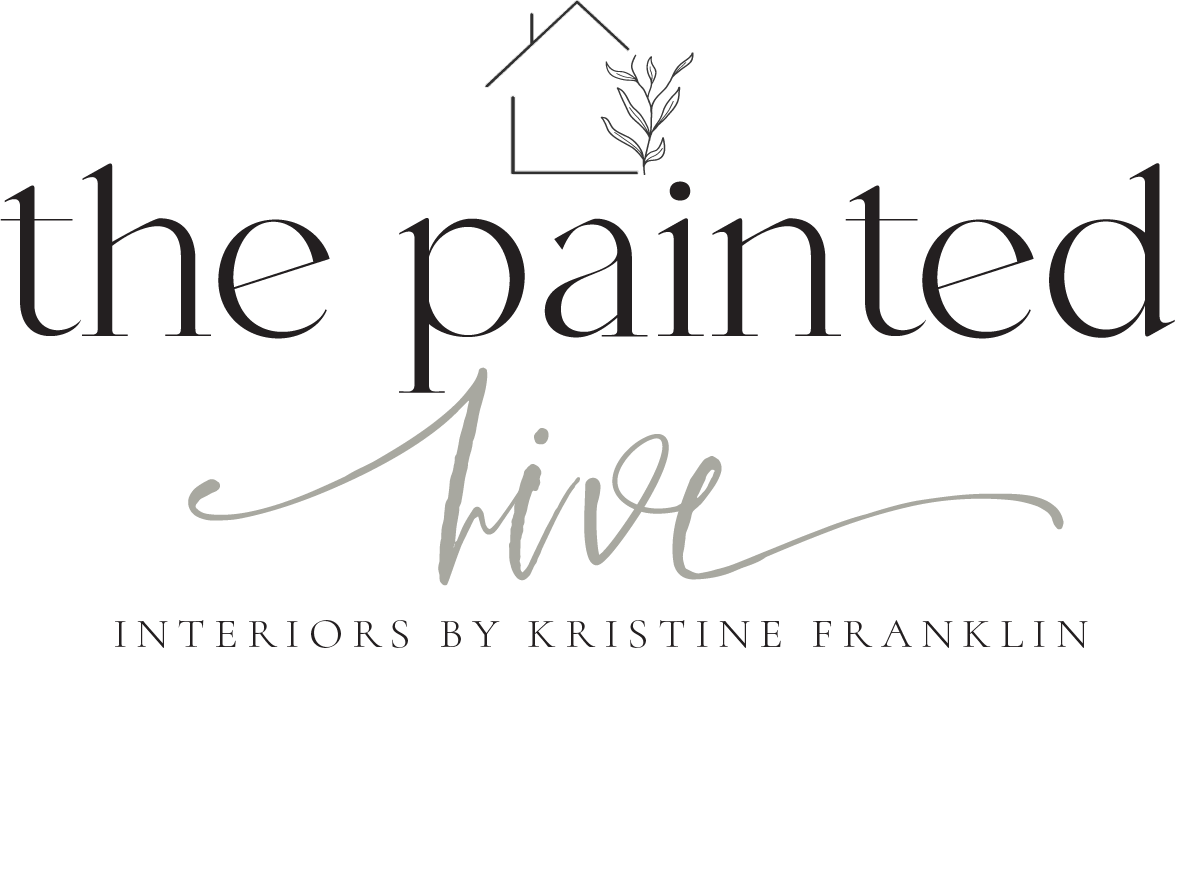
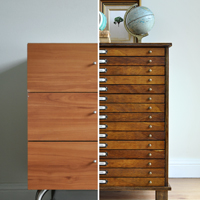
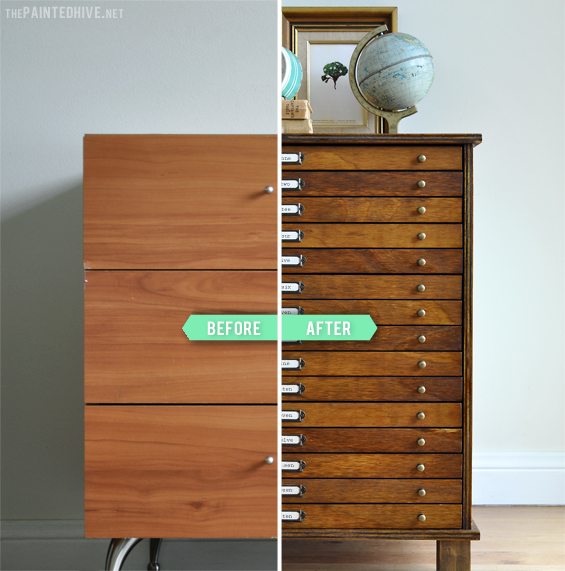



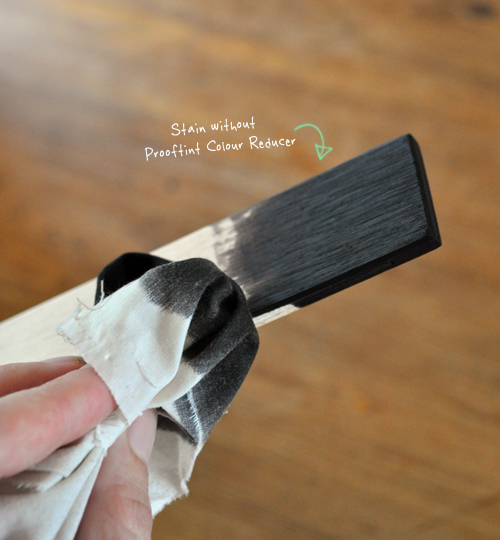
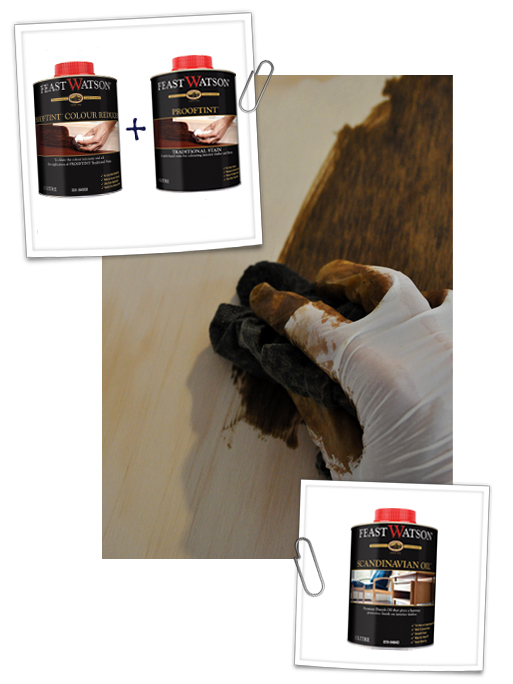



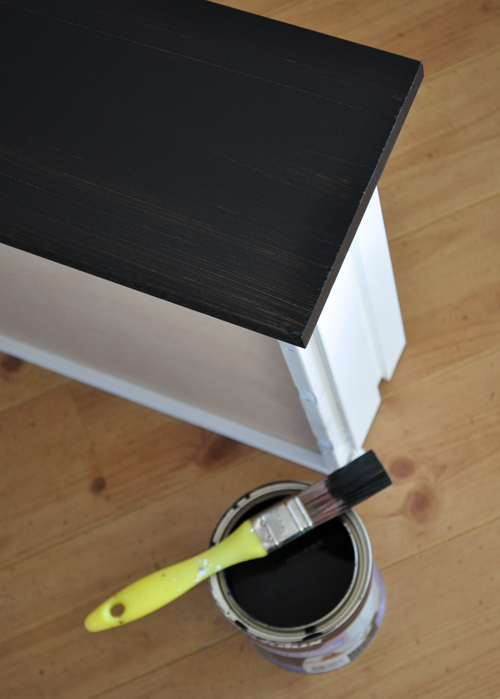
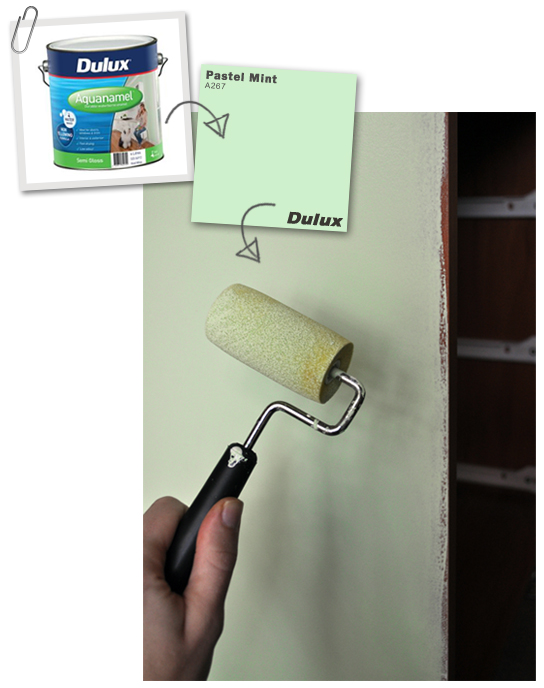

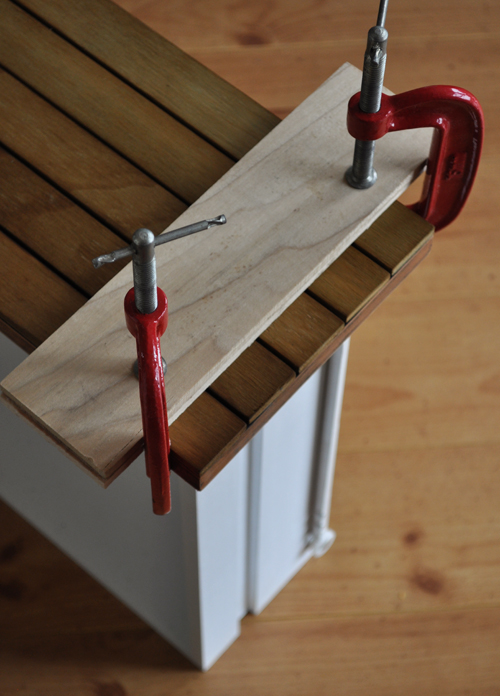
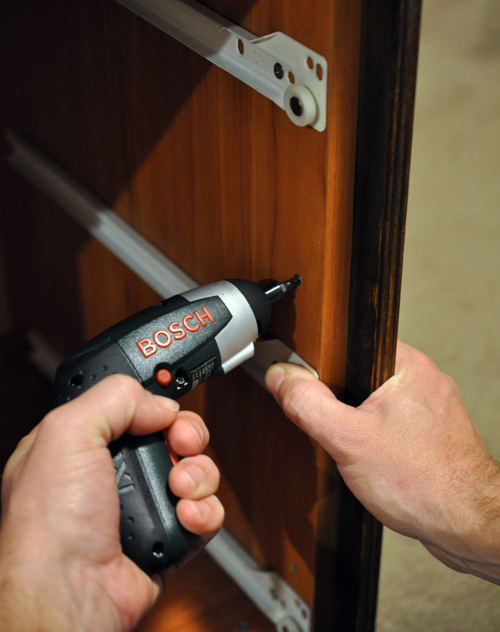
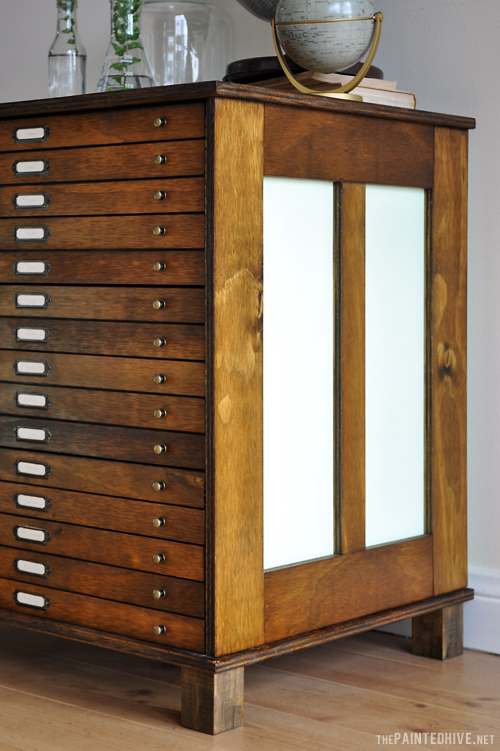

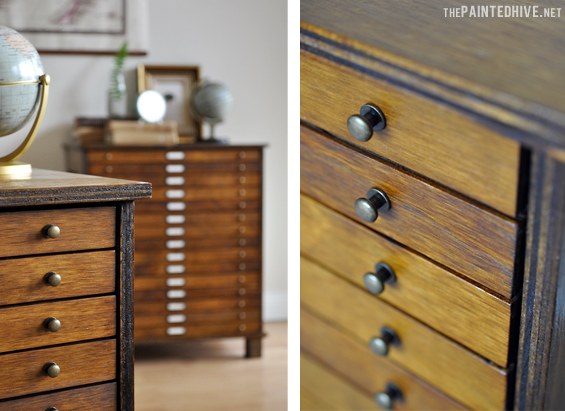
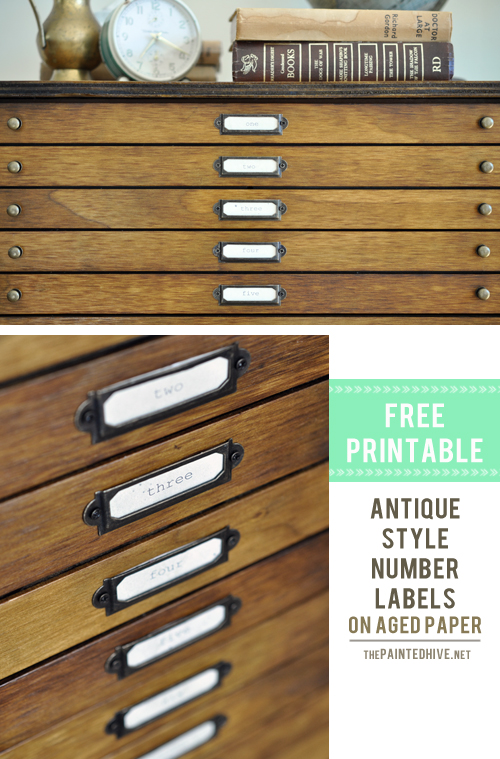
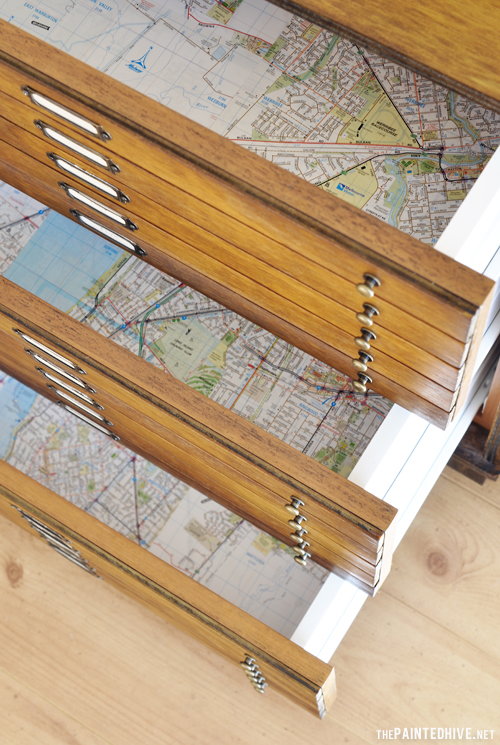
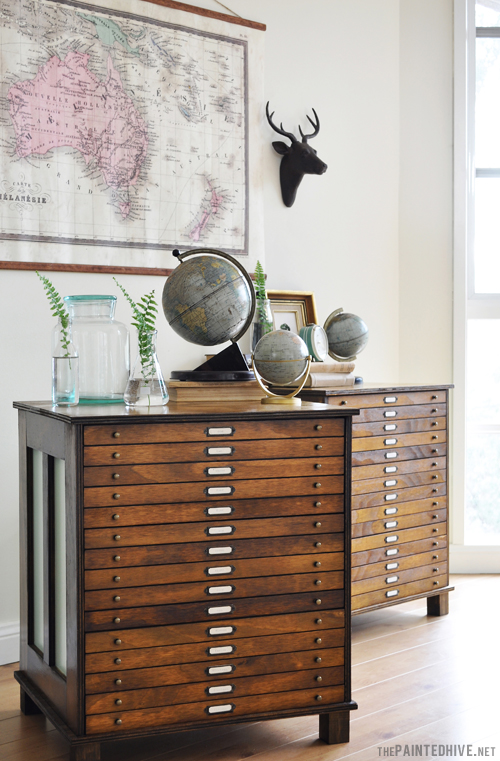
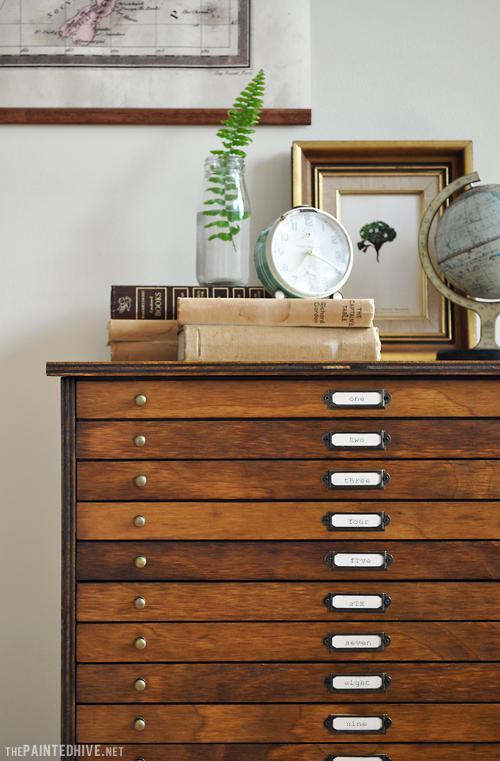
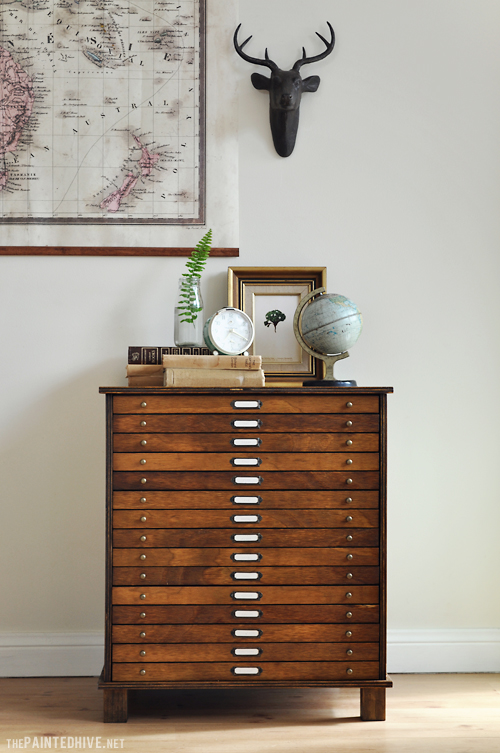
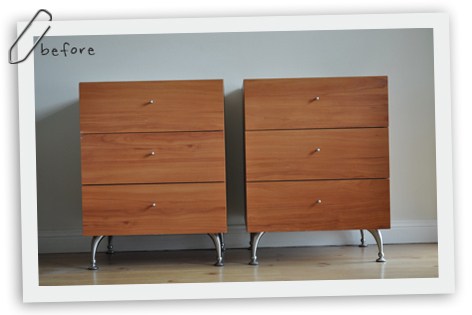
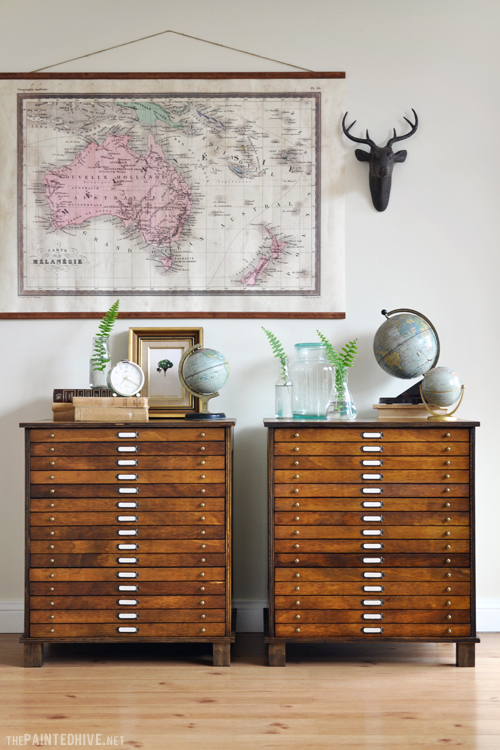
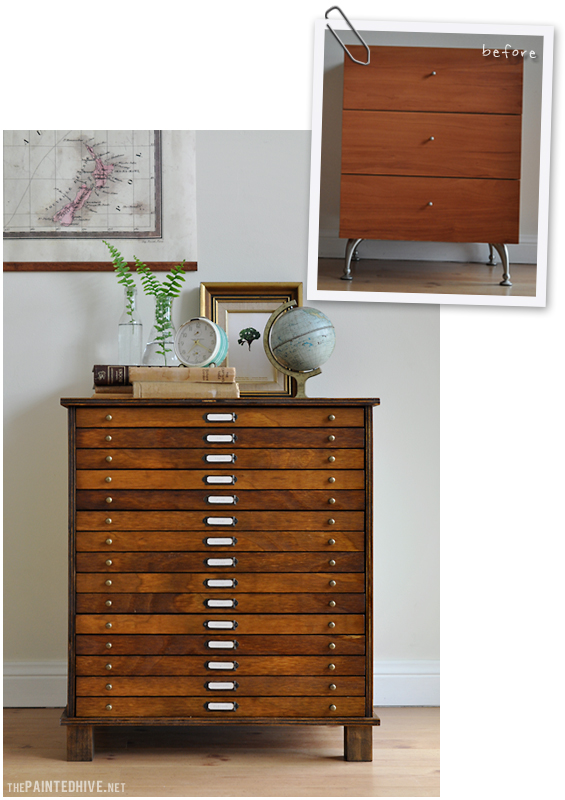
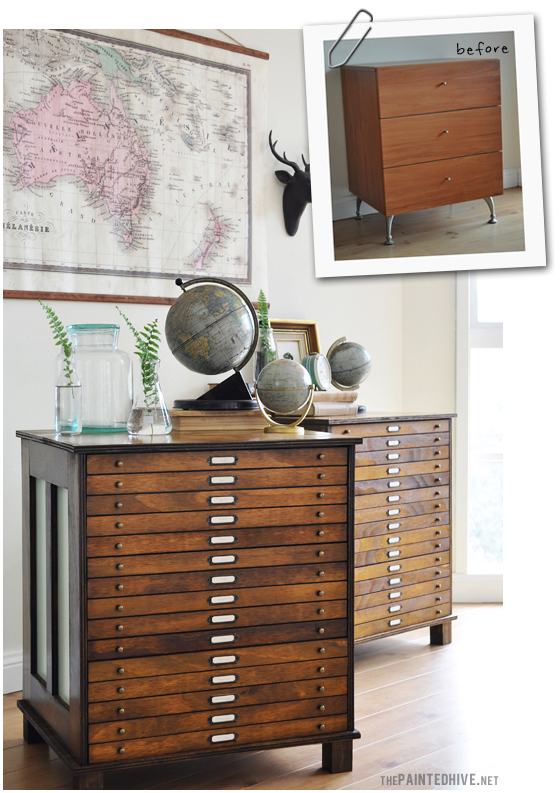

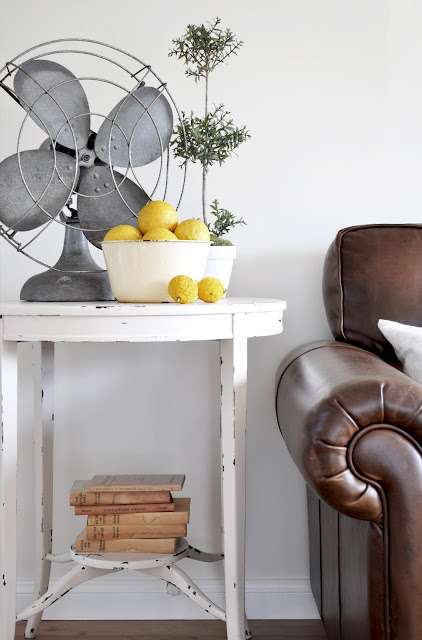
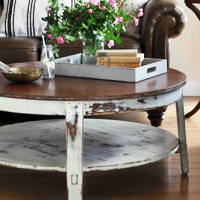
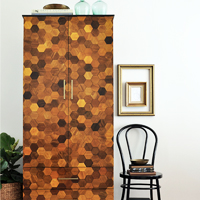
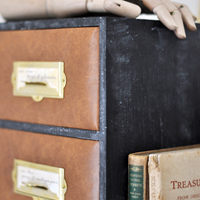

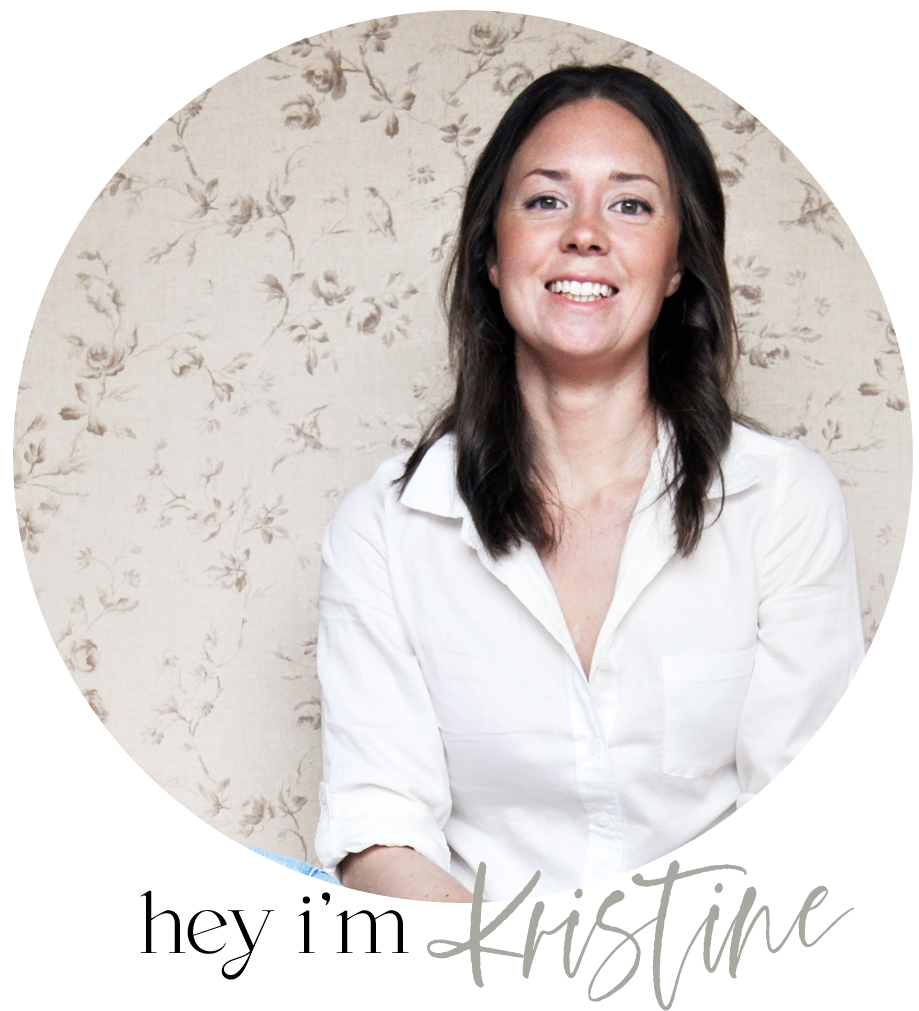

Hi, I love this project and would like to try it myself. I have one question. What is the measurement of the overhang on the top and base? I’m in America so I use inches. In your pictures it looks like 1/2 inch or 3/4 inch. Thanks
Hi Trish
From memory the overhang is only around 1cm which is less than 1/2 inch. Of course it’s just a matter of personal preference though so you can make it deeper if you’d prefer.
Kristine
I am just amazed. Have to do it on my boring table . Gorgeous job!
I know I am late to the party, but this is one of the best re-love (perfect name!) projects I have ever seen! You have a new fan and follower!
Thanks Patricia!
I just wanted to say that you have an amazing talent to think something like this up. I am new to redoing furniture and I try to think of ways to change things up, but I can say I am not as creative as you. Keep up the great ideas. Love them.
Thanks so much Kelly. What a lovely message.
Merry Christmas!
Fantastic work!
At first sight, I thought it was a Rast hack. Ikea’s Rast has a slightly different frame, but it could very easily be adapted to look the same.
Having said that, your project must have taken a tremendous amount of work and quite a few dollars ($81 in knobs and label holders plus stains, fixtures, etc.), so well done on seeing it through! The results are really fabulous.
Thanks Jane!
Yes, the Ikea RAST, or any other appropriate piece, could definitely be adapted to work.
It was quite a time-consuming project though it wasn’t overly difficult and was really rewarding.
I knew all the hardware was going to be a killer (even though I shopped around and got pretty good deals) which is why I bought the cheapest tables I could find in the first place!
All up I think each finished table cost around $80. They were on-sold for charity via auction for $760 – yay!
Totally awesome transformation, and I am not easily impressed! This is such a marvelous alternative to the slap-a-coat-of-paint-on-it method that is so prevalent. Just one tiny suggestion that would take this project to the next level. Cover the edges of the plywood with trim moulding or ripped stock. With the level of skill you clearly have, it would be a snap.
Thanks Billie Sue.
I did consider this though decided I actually liked the look of the exposed ply layers. I guess these tables are a bit raw and industrial so it somewhat suits them though for something more refined it would be a great finishing detail.
Great transformation. Beautiful work.
Thanks William.
God bless you for rescuing that contemporary pressboard monstrosity. Your pair of chests now look stunningly stylish and vintage now. At first glance, your transformation looked like something only a highly skilled professional woodworker could replicate. Thankfully, your tutorial shows it might be achievable for those less skilled like myself.
I love good bones. I have some mod looking boxes that would be super shadow boxes with this same treatment. I also have solid wood nightstands that are a creamy butter and coated with heavy shellac that have very square lines. I want to convert them into a bench seat or ottomans, I was perplexed how to do that because of the finish. The prospect of having to remove it was paralyzing. Thx!
I think the only disappointment in this, and this is NOT in any way shape or form a knock of any sort, but actually a testament to your talents, is that I would be wanting to try opening each of those flat drawers individually, lol. Great tutorial, fiull of detail and info that most would just gloss over in favor of making a soundbyte like you’d expect to see at other sites…ones that are extensions of cable tv stations, all sound and fury, but not much else. Thank you for spending the time and sharing with us all the hard work and eye for detail you’ve invested in this. (I have a couple projects where the cosmetic facades of some things I’m working on, including some cabinet doors, could actually benefit from your instructions here. )
PS…different William than the one from five days ago, several comments up, lol
Thanks so much William. I really appreciate you taking the time to leave such an encouraging comment. It’s truly great to hear that sharing my projects can help inspire others.
Excellent idea and the result is impressive. I have started a cabinet of curiosities and your transformation is just what I was looking for ! Thank you for the inspiration.
Just for information, what is the height of the sheets of pine ?
Thank you !
Thanks Emilie.
I’m not quite sure what you’re asking? How large the ply sheets were that I used? From memory they were 60cm x 120cm (I think).
Excuse my English, I’m French… :)
I wanted to know the size of the strips of pine you used and in particular the width.
Thank you !
Okay, gotcha. From memory they were approx. 600mm wide x 6mm deep x 42mm high.
Popping over from Pinterest =) OMG! Love it! I thought you made all tiny little drawers! I thought you were nuts! But this makes WAY more sense =) Be sure to share your recipes, crafts, upcycles & DIYs at Two Uses Tuesday (Mon 11pm EST to Fri 11pm EST) over at Sarah Celebrates if you don’t already!
Thanks Sarah. I’ll pop over!
Seriously wow! :)
Gee, thanks!
Preciosa transformación y estupendo trabajo, gracias por compartir.
Thanks, you’re welcome.
These look fabulous, but I was disappointed that the shallow drawers weren’t real.
Thanks Anne. Sorry to disappoint though this makeover is intended to capture the charm of multi-drawer cabinets whilst retaining the functionality of standard-sized drawers :) I think for most people nowadays having tonnes of little drawers is a bit superfluous. That said, if you’re looking to store something specific you can still buy actual antique/vintage flat-file cabinets – and reproductions too! DIY’ing your own is possible also though would require a lot of work. I’m sure there are tutorials out there on woodworking sites. Otherwise, maybe consider how you could transform some plastic office trays or towers.
Truly a incredible transformation this is only my first day on your page. You have made some remarkable pieces but this one by far was my favorite. Flawless
Thanks Colle. I think this one is a lot of people’s fave :)
Fantastic ideas Kristine!!! Wonderful that another magazine picked you up again! Congratulations!!!
Keep it up!!
P.S. You look great, BEAUTIFUL!!!
Oh thank you! Too sweet :)
So so wish I had of known about you and followed you back then these babies would be living at my place! Superb!!!!!!
Thanks Eliza :) That would have been awesome. I have no idea where they are now! Hopefully in a loving home.
x
What a fantastic job! It’s so inspiring and something I’d love to do… one day! I’ve just started refurbishing some old pieces and have been so happy with my jobs so far, but yours is just outstanding. Congratulations on the project and the money raised. Awesome work!
Thanks Cheryl :)
Mad skills, i love to be inspired by insainly creative people!!!!
Eek I absolutely adore this and must attempt it myself. Thankyou for sharing, it’s fab.
what a very clever girl you are, those cupboards look astounding afterwards, and no longer just for the bedroom… I was very impressed with the meticulous way you did all the stages, and I am sure a lot will be inspired..I am not sure I can have the patience, but if I did, I would certainly have a go.. lovely and thank you so much for sharing..I shall be back.. J
Ha, ha. It did take a bit of patience Jeannine. Not sure I could do it again either (well, actually, I do have plans for a slightly easier version). Thanks so much :)
Cheers
PS Actually, can I ask, did you see this project featured somewhere recently? I’ve just noticed a lot of new activity on the post though I can’t figure out the source. Thanks again.
You are so creative and clever! I love your website and I love the map drawers
Aw, thanks so much Ruth :)
sublime!!! c’est vraiment trés original et trés joli, j’adore!!!
un petit bonjour de France
Thanks so much. Lovely to have a comment all the way from France :)
Brilliant. This is so inspired. Amazing
I have 3 Iikea rolling cabinets that I want to do this with. Thank you so much for the great idea. I love power tools and own a few myself. Amazing and so nice you do this for charity.
Thanks Debbi. Hope you enjoy the project :)
Wow. This is so incredibly beautiful! Such attention to detail, from finish to pull knobs to drawer liner. Truly one of the most impressive DIY projects I’ve ever seen.
Oh wow, what kind words. Thanks so much :)
As far as I am concerned you are a genius!
Ha, ha. I wish! Thanks Kat :)
I absolutely LOVE this! I am definietly going to do this. Thank you so much for the idea!
That is so awesome. I am in awe. Thanks for the great idea and tutorial. :-)
Thanks Patricia :)
Hello, m’dear. I cannot believe how stunningly beautiful those are! You are to be GREATLY commended on your ingenuity, your vision and your tenacity! GLORIOUS RESULTS, just GLORIOUS!
Thank you for the inspiration . . . !
Best,
Love
(From Massachusetts, USA)
Thanks so much. What kind words :)
As I searched the web for repurposed hospital bedside table (plus, several variations of this description) I came across your site. Whoa! Blown away at what you accomplished with a simple bedside table. This is exactly what drives people to believe we can create anew, to bring new life to those old pieces! Amazing that your mind imagined that old table as it could be, and created it. Simply beautiful.
Aw, thank you so much Connie :)
What a fantastic transformation – I really love this project!
Thanks so much :)
Fabulous!
This is one amazing transformation :)
I always admired people that can do things with their hands..
One day i will try to do something. Mabey even this project as I LOVE the finished looked of these map drawers.
Thanks a lot for the walkthrough
This seems like a really simple question but is the cladding width just the leasurement of the dtawers divided by five?
That’s actually a great question and the answer is not quite as simple as you might expect. I wanted my faux drawers to look as authentic as possible so decided to factor in small gaps. So, whilst the overall width of one drawer might be, say, 15cm, each cladding strip is not 3cm. If that was the case, there would be no division between them which wouldn’t look genuine (or anywhere near as good). On top of that, the existing real drawers do have slight gaps between them (as can be seen in the before pics), so for continuity the cladding needed to use the same approximate gap – otherwise there would be obvious gaps between every fifth “faux drawer” (clearly this would spoil the illusion of one continuous column of shallow drawers). From memory, I allowed for a 3mm gap between the cladding strips. So, for each drawer front there is an overall deduction of 12mm, which is actually quite significant.
WOW! I have got to do this! Thanks so much for the inspiration Kristine!
Wow! these are absolutely amazing and so authentically vintage looking! Your skill-set is awesome! I’m showing this to my husband to see if he would like to create something similar to this. SO glad I discovered your blog!
Ha, ha. I hope he said “yes”!
I only found your blog last night and I’m in complete awe! :)
Aw, thanks Mel :)
WOW!!! Simply stunning and unique ‘re-love’ project! You’re an incredibly talented and gifted ‘DIY-designer’. So happy I came across your project and visited your site. Thanks for sharing your wonderful inspiration.
Aw, thanks so, so much Sue. What a lovely comment :)
Kristine you’re an asset to your home and to our gender!!!!
It’s not just the skillful way you work your projects; it’s the sheer inspired view you look at things and figuring out how to make them beautiful!!!
I’m in awe!!
Keep well. keep up the good (magnificent!) work and keep pinning your projects to inspire the rest of us!!
Thank you
Lillian
Aw, thank you so much Lillian. What an absolutely lovely compliment :)
You are very talented. Thank you for sharing, and congratulations!
Wow!! I want to do this with a chest of drawers!! I love it love it love it!!! Having worked out of actual map drawers (well, blueprint and plan drawers, since I helped build highways and bridges), I’ve opened and closed my share! I’m definitely going to be looking for a suitable I’m currently planning on decorating our grandson’s “visiting” bedroom with a few map-based ideas, so this will be a perfect addition in the new house!! Did I say I love this!!! Thanks so much for sharing!!
LOL, thanks so much for all the love! So glad it’s helped inspire you! It sounds perfect for the sweet room you’re creating and your background in construction :)
I want to do this to a dresser, except I want them to really be shallow drawers for holding rubber stamps. Are there any web sites you know of that show how to do that?
Hi Martha
Hmmm, not that I know of.
It sounds like you probably have two options; 1) use the carcass of an old dresser or cabinet, remove the exiting drawers or doors, then install new runners and build the small drawers from scratch yourself, 2) find some shallow drawers (maybe some that have been removed from an old printer’s press or flat file) then build a carcass to accommodate them. Either way, some construction is going to be needed!
Kristine
Thanks for your reply. I have an old dresser that I use for sewing and crafts storage, and I was actually thinking about removing the top drawer and installing runners and shallow drawers in that space. Rockler has plastic drawer guide rails cheap. I could use Home Depot project panels for the bottoms and lathe for the sides.
My rubber stamp collection has been growing fast lately, so I need to do something!
Thanks again!
Martha
Hi Martha
Yes, that sounds like a good little project. Switching out just one drawer would be much quicker and easier than doing the entire dresser.
Kristine
You should be inducted into the DIY Hall of Fame! When I see the before and after, side by side, I’m baffled and amazed at the same time. Also, your projects bring back such fond memories of my own yesteryear projects. Instead of using plywood, I covered desk drawers with flat molding producing a similar appearance. Once my house was filled, I stopped the furniture makeovers and now pursue other creative endeavors but I do miss it. Thankfully, I have plans to work on a piece waiting patiently for me in my garage. Lastly, I like how you mix your craft with giving back. I would love to find an organization where I can do the same. Thanks so much for the inspiration.
Thanks so much for your lovely comments Joselyn. I started refinishing pieces to furnish our first home (which we’re still in) after we had just moved in and had $0! Once the house was full though I couldn’t stop! So I kept upcycling items, as a part-time job of sorts, and then sold them through eBay. It was very fulfilling. Nowadays I only refinish pieces occasionally though I hope to step things up and sell furniture again once my kids are a little older. It would be great to be able to donate a percentage of the sale price to charity!
I love your blog! I’ve just discovered it and have been looking through all your reloved projects. They are all amazing!
Lianne | Makes, Bakes and Decor
Thanks so much Lianne :)
Niiice!! Thought they were shipping palette strips originally! Which I think I will try using this way and co-opt your great idea! I have kept some nice old aged strips-lathe from inside my old walls as well! …loves it. And great job!
That would be so cool. The piece would tell such a great story too if you used old strips from your walls!
This is an AWESOME make over?? Love it and I’m going to try it out!! Ty!
You do beautiful work with great ideas . . . many kudos!
You caught my attention big time on this one – I was hoping to see these two pieces become actual map / flat file drawers, which would have become more work than I can imagine!! I am ALWAYS on the lookout for more drawers to store artwork-in-progress and large paper.
Oh my god!
You made my day, my week, …..
I just love old apothecary kind of furniture. With all the little drawers. Your project just gave me an idea : I will pimp up my old 5 grey metal drawer army type of file cabinet like this before and after project.
Thank you soooooooo much for the idea!
Sandy
Asandy591@Gmail.com